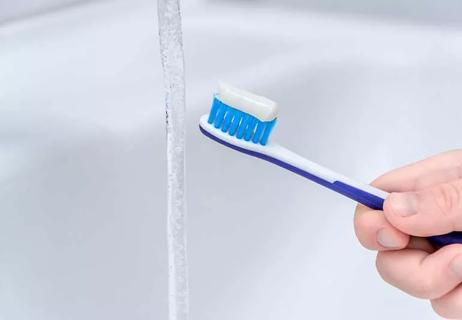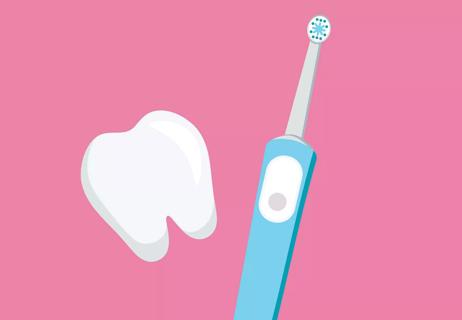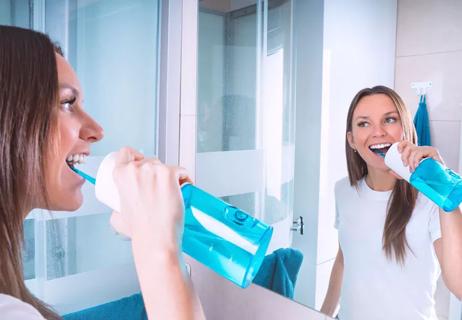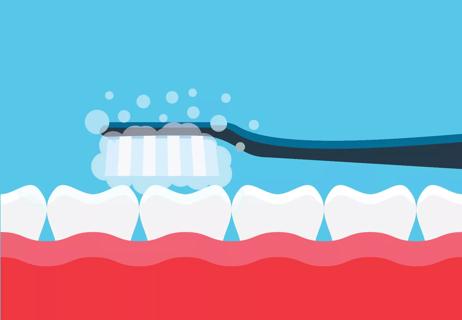You might have a sensitive gag reflex — but gagging while brushing can also be a result of certain medical conditions

It’s a horrible feeling. You’re a minute into a two-minute tooth brushing session and … uh oh. Suddenly, you’re retching into the sink, trying not to vomit. Again.
Advertisement
Cleveland Clinic is a non-profit academic medical center. Advertising on our site helps support our mission. We do not endorse non-Cleveland Clinic products or services. Policy
Dentist Anne Clemons, DMD, explains why you gag while brushing your teeth and the steps you can take to make your twice-daily cleanings more comfortable.
There are many reasons why brushing your teeth might leave you dry heaving or vomiting. The most common: You have a sensitive gag reflex.
“We have a gag reflex for a reason,” Dr. Clemons explains. “It’s a defense mechanism. It’s our body’s way to avoid choking on or swallowing things that could be dangerous.”
Some of us are born with a hypersensitive gag reflex, while others have little to none. Then, there are people — like sword swallowers and fire eaters — that train their bodies to be less reactive.
Most of us, Dr. Clemons says, are somewhere in the middle: We only gag when doing specific activities, like brushing our teeth.
Other reasons you might gag or vomit while brushing include:
Advertisement
If practicing good oral hygiene is making you feel sick, you might be tempted to skip it. But Dr. Clemons warns against bypassing your brushing routine. Instead, she recommends seven tips to make brushing more comfortable.
If you use a large, bulky toothbrush that takes up a lot of space in your mouth, consider ditching it for a child-size toothbrush or an electric toothbrush with a small, circular head.
If you use a toothpaste with a strong flavor, going for something milder may reduce irritation, Dr. Clemons suggests.
There’s more than one way to clean a tooth.
Instead of a vigorous, back-and-forth approach, place your electric toothbrush head on a single tooth and hold it there for several seconds. Dr. Clemons says the toothbrush head can do most of the work for you.
Don’t have an electric toothbrush? Brushing in small circular motions may be easier on you.
Another recommendation? Slow down. Being slow and deliberate is good for your gag reflex and your teeth.
Easier said than done, we know. But if there’s a psychological component to your brushing issues, reducing your stress could make all the difference. Dr. Clemons recommends you:
There’s no rule that says you have to brush for two minutes continuously. If you start feeling green around the gills 30 seconds in, stop. Take as many breathers as you need to hit that magic two-minute mark.
If two minutes just isn’t happening tonight, that’s OK, too. Some brushing is better than none — and tomorrow’s another day.
Dr. Clemons recommends getting curious about what sets off your gag reflex. Is one part of your mouth more sensitive? Does a particular brushing angle make your stomach flip? What happens when you spit out your toothpaste or scrape your tongue?
Once you understand what activates your gag reflex, you may be able to retrain it.
“Start by brushing in a safe spot for a few seconds,” she advises. “Then, go to a borderline area and spend a few seconds brushing there before returning to your comfort zone. If you feel OK after, gradually increase that duration with every brushing session.”
If fear of gagging keeps you from brushing — or visiting your dentist — let them know.
“There are things we can do to make dental care a bit easier,” Dr. Clemons reassures. “We want to do good work. But we want to do it as quickly, gently and comfortably as we can. If we know what’s going on or what may be triggering your gagging, we can work around it.”
Advertisement
Numbing throat sprays and special positioning can make your dental exam more bearable. In extreme cases, your dentist may offer to use light sedation to reduce your anxiety and suppress your gag reflex.
Gagging while brushing your teeth is extremely unpleasant. But it’s nowhere near as bad as actually throwing up. How do you brush your teeth after that?
Dr. Clemons recommends washing your mouth out with either water, a diluted mouthwash or a glass of water mixed with a teaspoon of baking soda. Once your mouth’s clean(er), clean your toothbrush — or replace it, if you’d prefer.
Next? Take a break and give your body a chance to recover.
“Digestive acids are strong enough to weaken the enamel on the outer areas of your teeth,” she warns. “If you brush right away, you may increase the damage. Your gag reflex is even more hypersensitive after you vomit anyway. Try again when your stomach’s had time to settle.”
Advertisement
Learn more about our editorial process.
Advertisement

An old, worn toothbrush is a hazard to your teeth and gums and a breeding ground for germs and bacteria — replace it every three to four months at least

Done correctly, daily flossing can help keep your teeth and gums healthy

Bloody gums after flossing usually signal a buildup of plaque, tartar and bacteria

A variety of products can be effective at removing stains on teeth

Despite unfounded theories, fluoride has the power to make your teeth stronger

Studies show they do a better job than manual brushes at removing plaque and debris

This tool is an add-on to your regular brushing and flossing habits, not a replacement for them

Brushing for two minutes, twice a day is your baseline for dental health

The best parenting style balances enforcing rules and showing plenty of love

Tips include cutting back on sugar, focusing on exercise and managing stress

It can be harder to let go when you’ve invested time, energy and emotions — but it might be the healthier choice long term